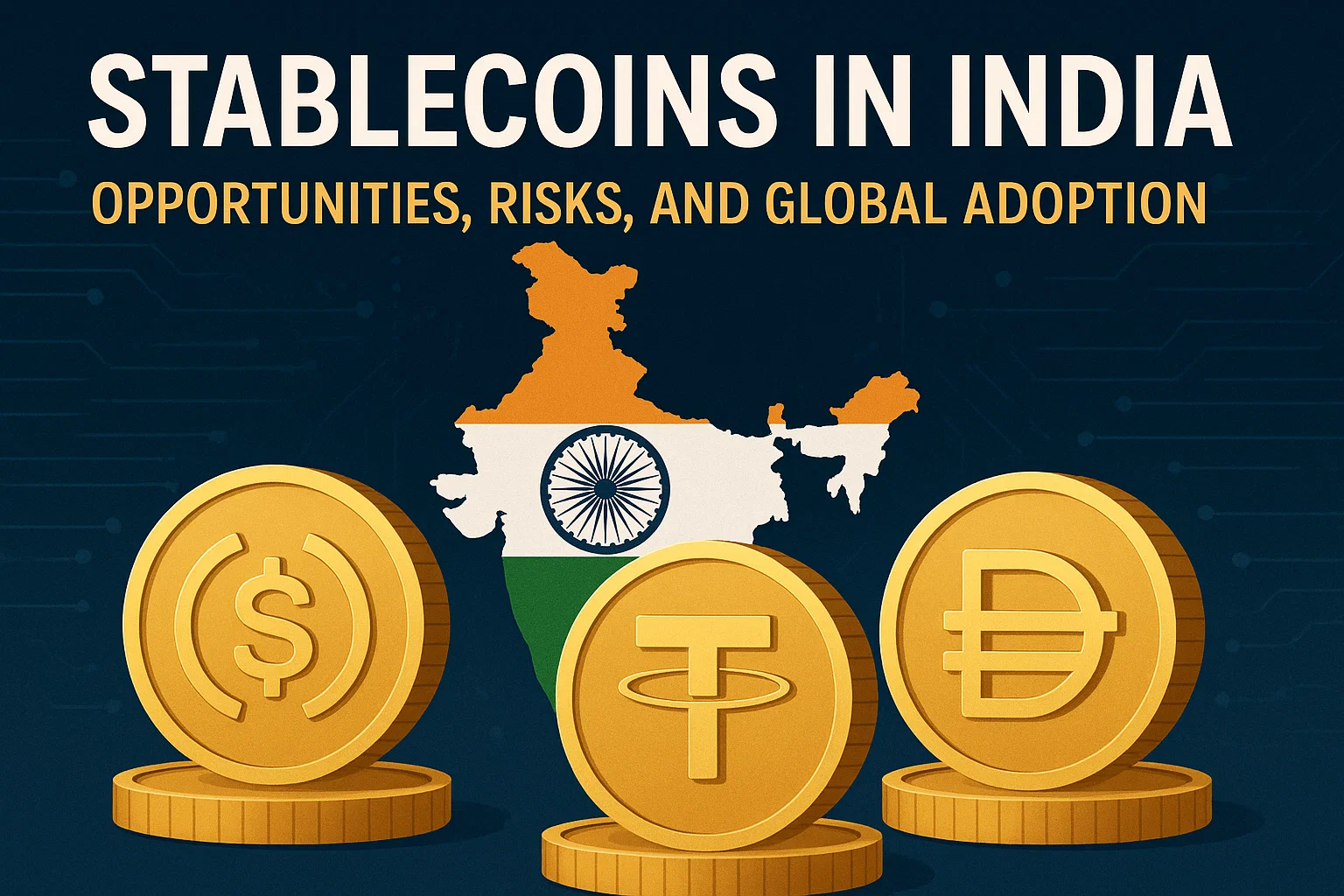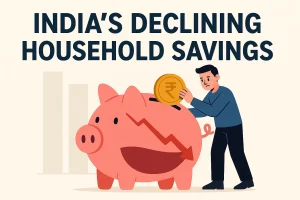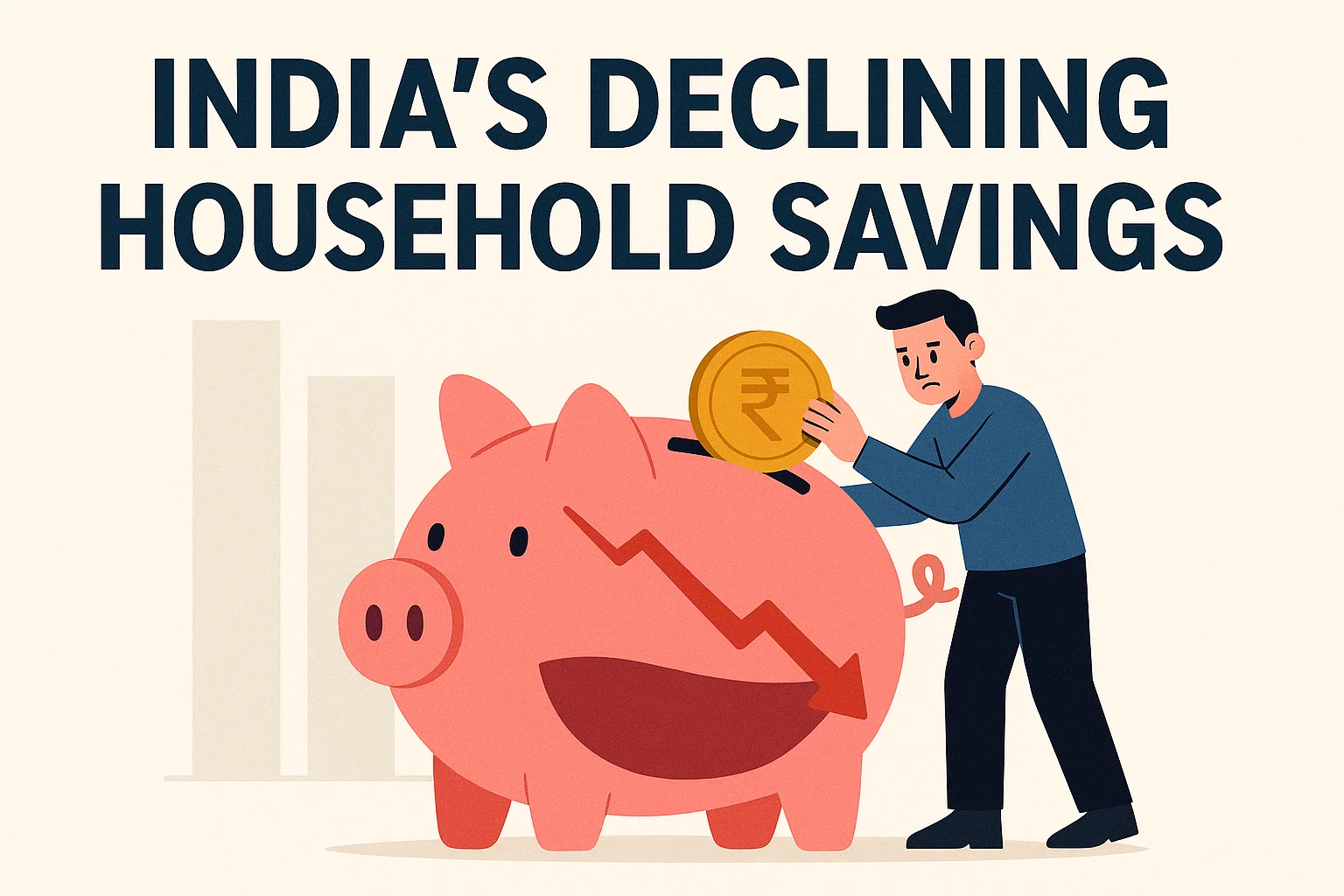Stablecoins in India: Opportunities, Risks, and Global Adoption
Explore stablecoins—digital assets pegged to fiat or commodities—covering their models, global adoption, regulatory challenges in India, and potential benefits for remittances, MSMEs, and the digital economy.
Context: Stablecoins in India
Stablecoins are emerging as a faster, cheaper settlement layer. Powered by blockchain technology, these digital tokens are pegged to stable assets like the US dollar and are gaining significant traction from institutional finance and regulators worldwide.
What are Stablecoins?
Stablecoins are a distinct category of crypto assets or Virtual Digital Assets (VDAs) designed to maintain a stable value relative to a specified asset or a basket of assets, such as a fiat currency or a commodity. This perceived stability distinguishes them from highly volatile cryptocurrencies like Bitcoin. They achieve this stability primarily through three models:
-
Fiat-backed Stablecoins:
These are backed by reserves of traditional currencies (e.g., US Dollar, Euro) held in regulated banks. Examples include USDT (Tether) and USDC (USD Coin).
-
Crypto-backed Stablecoins:
These are collateralised by other crypto assets. A leading example is DAI, which is backed by Ethereum.
-
Algorithmic Stablecoins:
These maintain stability through automated algorithms that control the token’s supply based on demand, without holding significant reserves. This model is more experimental and risk-prone, as evidenced by the collapse of TerraUSD.
Why has India been Cautious?
- Macroeconomic Risks: The potential for capital flight, loss of control over monetary policy, and the threat to the dominance of the Indian Rupee are primary concerns for the Reserve Bank of India (RBI).
- Consumer Protection: The market is perceived as highly speculative and volatile. The risk of retail investors losing money in fraudulent schemes or algorithmic stablecoin collapses (like TerraUSD) is significant.
- Money Laundering and Illicit Finance: The pseudo-anonymous nature of blockchain transactions raises concerns about their potential use for money laundering, terror financing, and circumventing capital controls.
- Regulatory Arbitrage: The borderless nature of crypto assets creates challenges for a single nation to regulate effectively, fearing that premature regulation could make the country a hub for unregulated activity.
How has the world adopted stablecoins?
The global adoption of stablecoins is moving from niche to mainstream, driven by institutional finance and regulatory clarity. Major players like BlackRock, Fidelity, and Bank of America have launched stablecoin initiatives. Societe Generale became the first major European bank to issue a dollar-pegged coin. The European Union’s MiCA (Markets in Crypto-Assets) framework and the U.S. GENIUS Act provides clear definitions, reserve standards, and consumer protections, legitimizing stablecoins as regulated financial instruments. Visa and Mastercard are integrating stablecoin settlements on blockchains like Ethereum and Solana, moving beyond experiments to strategic recalibrations of their payment networks. As per Visa’s 2025 report, over $220 billion worth of stablecoins are in circulation, settling transactions worth trillions, demonstrating significant real-world usage.
How can they help the Indian Economy?
Despite the risks, a well-regulated stablecoin ecosystem could offer substantial benefits to the Indian economy:
- Revolutionising Remittances: India is the world’s largest recipient of remittances (over $100 billion). Stablecoins can reduce transfer times from days to seconds and slash costs from an average of ~$44 to less than $0.01, putting more money in the hands of recipients.
- Boosting Global Trade: Indian MSMEs engaged in international trade could use stablecoins for instant, low-cost settlement of invoices, improving cash flow and competitiveness.
- Enhancing Financial Inclusion: Integrated with India’s robust UPI and digital infrastructure, stablecoins could provide seamless access to global digital finance for the unbanked and underbanked.
- Powering the Future Digital Economy: As AI and IoT advance, “agentic payments” will require money that moves at “machine speed.” Stablecoins provide the programmable, real-time settlement layer for this hyper-connected economy, fostering innovation in fintech and DeFi.
Subscribe to our Youtube Channel for more Valuable Content – TheStudyias
Download the App to Subscribe to our Courses – Thestudyias
The Source’s Authority and Ownership of the Article is Claimed By THE STUDY IAS BY MANIKANT SINGH




